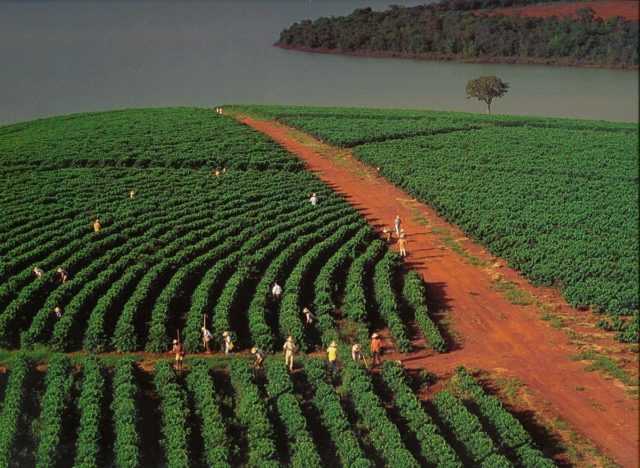The harvesting of arabica coffee from the Brazilian 2016/17 season advanced in the second fortnight of June, favored by the firm weather. Although rains in the first fortnight of the month hampered field activities, the harvesting of the current season was a little more advanced than in the previous season.
That is because activities started earlier this year (in mid-May), while harvesting of the 2015/16 season started late, mainly because of uneven maturation of grains.
The most advanced region was northwestern Paraná. Local agents consulted by Cepea estimated that about 45% of the total volume had already been harvested until late June, while, in the same period last year, it had not surpassed 30%. In that region, although rains hampered harvesting advance, the dry weather in late June favored field activities.
The higher percentage of harvested grains in the current season, however, does not mean there was more coffee available for trade in that period. On the contrary, in general, the Brazilian market was slow, with most growers preparing and setting aside grains to accomplish contracts with scheduled delivery.
Then, liquidity in the arabica market was slow in Brazil in the last fifteen days of the month. The CEPEA/ESALQ Index of arabica type 6 hard cup or better (delivered in São Paulo city), closed at 500.41 BRL (155.89 USD) per 60-kilo bag on June 30, 9.46% up compared to May 31.
For robusta, the dry weather in Espírito Santo reduced production and facilitated the advance of harvesting in that state, which, according to agents consulted by Cepea, was nearing 90%, same as last season’s.
Quality of the current 2016/17 season was damaged. In Rondônia, similar to Espírito Santo, the quality of the grains harvested was low. Agents also pointed to a reduced volume compared to previous seasons.
The CEPEA/ESALQ Index of robusta type 6, screen 13 (Espírito Santo), closed at 399.25 BRL (124.37 USD) per 60-kilo bag on June 30, 2.69% up in the month.
USDA – According to the United States Department of Agriculture (USDA), global inventories of coffee may finish the 2016/17 crop at 31.5 million bags, 11% lower than that from last season and the lowest since 2012/13 – data were released on June 17. For Brazil, USDA indicated an increase of 13.26% in the 2016/17 crop, which might total 55.95 million bags.
Therefore, the lower global inventories are linked to the increase of world consumption and to the lower production in Vietnam, Colombia and Indonesia, important producing countries. Thus, international quotes may be even more influenced by the volume harvested in Brazil.
According to agents consulted by Cepea, the USDA report was well accepted for the arabica coffee. For the robusta, however, most agents consulted by Cepea did not believe Brazil may produce 12.1 million bags this crop as estimated by the USDA.
For them, the numbers from the National Company of Food Supply (Conab) were closer to reality. According to Conab, robusta crop may total approximately 9.4 million bags.















